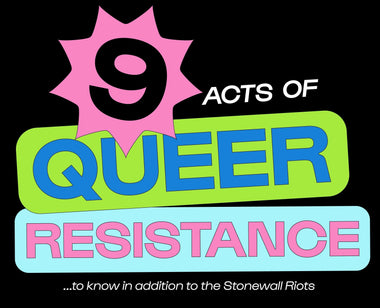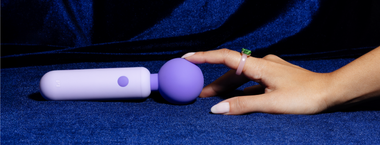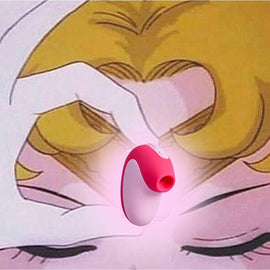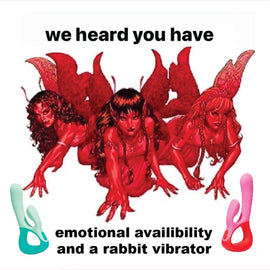What Does Great Sex Ed Look Like?

In the United States, not all sexual education is created equal. The class taught by a physical education teacher in Texas is way different from the class taught by a pediatrician in Vermont — and both might be completely different from the health teacher’s class in Missouri. From sea to shining sea, our nation’s children are learning a whole hodgepodge of information about getting it on.
And a lot of it is pretty garbage, to be frank. Up until 2009, when the Obama administration reallocated the $14.5 million that was going to abstinence-only sex education to comprehensive sex education, the only federal involvement in sex ed was to demand that schools teach abstinence or abstinence-only sex education. Which basically comes down to: Don’t do it. Sex is bad. Sex will kill you. Condoms don’t work. You’re a chewed up piece of gum if you have sex with multiple people. If you came up during the Bush era, like I did, then you’ve heard it all.
“I think it’s fair to say that an appreciable portion of kids get sex education,” Bill Albert, spokesperson for the National Campaign to Prevent Teen and Unplanned Pregnancy tells Unbound. “But I also think it’s fair to say that the majority do not.”
According to the Guttmacher Institute, only “22 states and the District of Columbia mandate both sex and HIV education; two states mandate sex education alone, and another 12 states mandate only HIV education.” When it comes to anything beyond how babies are made and diseases that can kill you, only 13 states require discussion of sexual orientation, with nine requiring “inclusive discussion of sexual orientation” and the other four requiring that sex ed classes only include “negative information” (i.e. homophobic) about sexual orientation. Four states require that schools talk about gender identity, no one mandates a discussion of pleasure, and only California requires a class about consent. Oh, and 19 states require that “instruction on the importance of engaging in sexual activity only within marriage be provided.”
Still with me? It’s rough out there for anyone who cares about whether or not American children are getting accurate, non-judgmental, science-based sexual education. And we all should be — sex is an essential part of the human experience and everyone deserves accurate information about it. It’s also, however, a very personal subject that parents and communities care a lot about, on all sides of the issue. Whether you believe that people should abstain from sex until they’ve joined hands in matrimony or you think that more sexual experiences bring a fuller life, everyone cares deeply about their kids are taught.
So how do you balance the right of parents and communities to have a say in what their children learn with the right of children to have access to excellent information and a solid sex education? Luckily, there are a few programs across the country that are doing just that.
Comprehensive sex education
I came of age in the abstinence-only sex education Bush era, but was blessed with a woman who I will forever think of as the Sex Ed Fairy Godmother: Dr. Barbara Frankowski. Dr. Frankowski was not only my pediatrician, but was also the sex educator for the Burlington School District in Burlington, Vermont, for 20 years. Starting in fourth grade, we’d be filled with dread and anticipation for the one day a year when Dr. Frankowski came in and gave her age-appropriate comprehensive sex ed class.
Dr. Frankowski told me that I was the perfect age to benefit from Burlington’s comprehensive sex ed program. In 1986 — the year before I was born — then-U.S. Surgeon General Everett Koop explicitly stated in an article in TIME magazine that it was time for sex education to talk about “information on heterosexual and homosexual relationships” because of the "deadly health hazard” of HIV/AIDs. “[W]e have to be as explicit as necessary to get the message across,” Koop said. “You can't talk of the dangers of snake poisoning and not mention snakes.”
But, Dr. Frankowski says, they weren’t yet talking about snakes in Burlington. And neither were most American sex ed teachers. According to Planned Parenthood, the debate about whether sex ed should be comprehensive or abstinence-only started in the 1980s, but it wasn’t until 1991 that the Sexuality Information and Education Council of the United States (SIECUS) released their guidelines for comprehensive sex education. Those first Guidelines for Comprehensive Sexuality Education — Kindergarten–12th Grade said that comprehensive sex education “should assist young people in developing a positive view of sexuality, provide them with information they need to take care of their sexual health, and help them acquire skills to make decisions now and in the future.”
In Burlington, the District Curriculum Director met with parents, doctors, teachers, and faith-based organizations “so that they would make sure that they would put together a curriculum that was respectful and acceptable to a broad spectrum of people,” Dr. Frankowski says. “It was really smart that they did it that way, and that’s why they also had such good buy-in.”
Talking with the community is essential for a comprehensive sex ed program to succeed in public schools. And while the Vermont community is largely homogenous — 97 percent of the state is white — Burlington has been a refugee resettlement city since 1989. In my own childhood, I sat next to Vietnamese, Tibetan, Balkan, and then Sudanese, Somali, and Congolese refugees in class. In subsequent years, Burlington has seen an influx of New Americans from Muslim-majority countries — and Dr. Frankowski says they initially weren’t very pumped about sex ed in schools. So she called a meeting in the local elementary school to talk about it.
“There were three or four different groups of parents, each with their own interpreter,” Dr. Frankowski says. “I explained to them what we talked about for the fourth and the fifth grade and the parents had a chance to ask questions. Once they understood what was going on — and once we talked about why here in the United States you probably should have your children learning this stuff this way rather than seeing it on TV or learning about it from other kids — the parents agreed and they let their kids participate in the classroom.”
The SIECUS Guidelines were reprinted in 1996 and again in 2004. Today, the term “comprehensive sex ed” has grown to become an umbrella term for curriculum that focus on much more than only abstinence. The website Future of Sex Ed defines it as:
“A planned, sequential K-12 curriculum that is part of a comprehensive school health education approach which addresses age-appropriate physical, mental, emotional and social dimensions of human sexuality. The curriculum should be designed to motivate and assist students to maintain and improve their sexual health, prevent disease and reduce sexual health-related risk behaviors. It should allow students to develop and demonstrate developmentally appropriate sexual health-related knowledge, attitudes, skills, and practices. The comprehensive sexuality education curriculum should include a variety of topics including anatomy, physiology, families, personal safety, healthy relationships, pregnancy and birth, sexually transmitted diseases including HIV, contraceptives, sexual orientation, pregnancy options, media literacy and more. It should be medically accurate. Qualified, trained teachers should provide sexuality education.”
Our Whole Lives (OWL) program
But in places where public schools are coming up short when it comes to comprehensive sex education, other programs are stepping in to fill the void. One of the best known of those program is the Our Whole Lives (OWL) program, which was started by the Unitarian Universalist and United Church of Christ churches. The program — which is secular, with an added module about sexuality and faith for churches to use — focuses on the values of “justice and inclusivity.” The program includes 25 sections (26, if educators include the one about porn) that teach kids about everything from how babies are made to consent to, yes, pleasure.
The goal of OWL is to truly cover a person’s entire lifespan. The program, when done in its entirety, starts in kindergarten and goes through the end of high school. But it doesn’t end there: Melanie Davis, the OWL Program Associate, is currently developing a section for senior citizens. When OWL is used in congregations, students get the full curriculum. However, when it’s adapted for schools, Davis says that kids often miss out on vital parts.
“Public schools just generally don’t have that many 90-minute sections, so they usually do some of their own curriculum or they piecemeal workshops,” Davis tells Unbound. “We like people to use the whole thing, because if you pick and choose, you’re trying to decide what the youth in your program need. And you might think they don’t need the thing on gender, but you don’t know that. There might be one person who is really struggling and needs to put words to their experiences.”
OWL also requires a greater commitment from parents than the standard sex education programs in schools. Parents participate in a three-hour orientation program before deciding whether or not their kids should participate and kids are encouraged to talk to their parents throughout their time in the program.
“We believe firmly that parents are their children’s primary sex educators,” Davis says.
The OWL program was developed based on the same SIECUS guidelines that helped shaped the comprehensive sex ed program that Dr. Frankowski taught in my hometown. Davis says that the original curriculum developers also asked teens in their community to come up with a set of values, involved congregations and community youth-serving organizations, and that they field test everything before it gets put in print. This ensures that OWL not only provides comprehensive sex ed, but also meets the needs of the communities it serves.
Peer-led sex education
Most sex ed programs are taught by adults — but teenagers are more likely to ask their friends about sex. Think about it — who wants to ask a grownup about blowjobs? The thought alone is probably enough to make any 15-year-old turn redder than a devil emoji. We all had that friend (or were that friend) back in high school who everyone would ask for sex advice. That advice varied in quality, to be sure, but if we were lucky, they were part of one of the amazing peer-led sex education programs — like Planned Parenthood’s award-winning Teen Council program — that are happening all across the country.
Teenagers who participate in peer-led sex ed programs receive extensive training so that, unlike 13-year-old me, they don’t have to turn to the internet to answer their friend’s questions. They also lead formal classes within their communities, as a supplement to or a replacement of traditional sex ed classes. A description of one such class in a New Jersey peer led sex ed program by Steph Auteri in the publication Broadly suggests that while classes might be a little more “rowdy” than those run by adults, it seems like the message is getting across.
"Students sometimes are chatty during the [assemblies], because I think they are still new at the amount of open dialogue Teen PEP encourages," peer educator facilitator Anna-Maria Hernandez told Broadly. "But this year, we interviewed our first batch of juniors who wanted to become Peer Educators who had received Teen PEP as freshmen... They were so knowledgeable, so I feel confident that they are taking away great messages.”
The controversies around sexual education aren’t going to go away anytime soon. Sex in our culture is so deeply entwined with other values, from religious to moral to liberal, that we’re probably never going to agree completely on how all American children should be educated. However, programs like Dr. Frankowski’s, OWL, and peer-led sex education prove that involving communities in the planning and implementation of sex ed programs can result in great education for kids — even in communities with differing values.
Emma McGowan is a sex positive feminist whose hobbies include embroidery, sewing ridiculous clothing, oversharing on the internet, connecting with other women and femmes, and reading at least three books a week. Her work has appeared in Mashable, Mic, The Bold Italic, The Daily Dot's The Kernel, and her own site, Kink&Code.
Illustration by Anna Sudit
Update January 9, 2019: As of September '18, a total of 8 states in the U.S. mandate consent education.

Latest Articles

A Hot and Quick Guide to BV, UTIs, and Yeast Infections

9 Acts of Queer Resistance to Know in Addition to the Stonewall Riots








